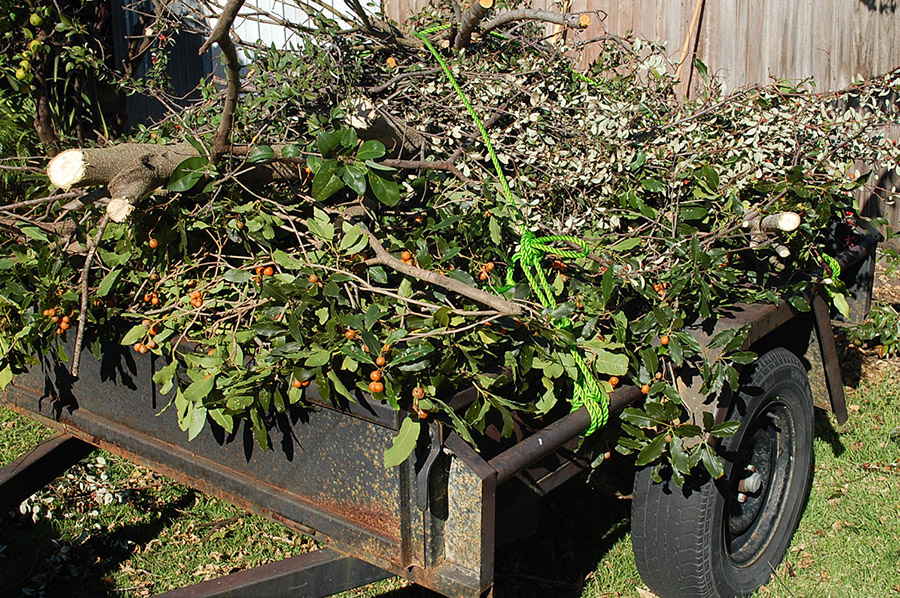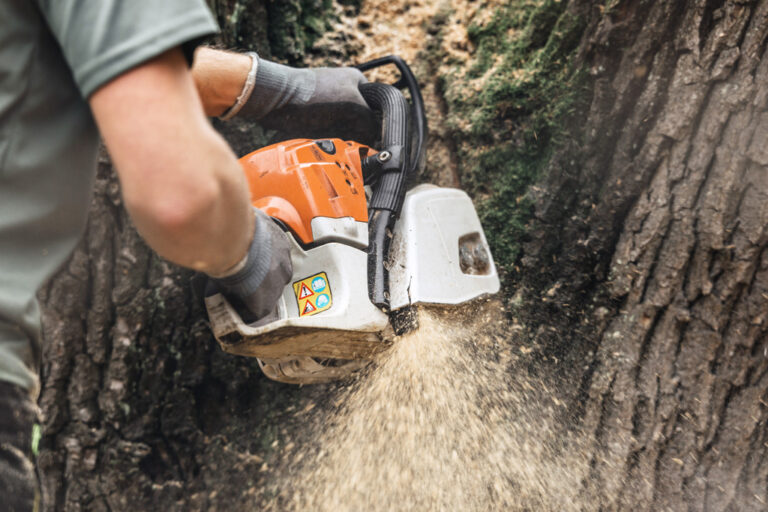The Advantages of Complete Tree and Stump Removal for Property Safety
Why Should Property Owners Consider Complete Tree and Stump Removal for Enhanced Property Safety?
Tree stumps left behind after cutting down trees create serious safety and maintenance concerns that property owners cannot afford to ignore. These remnants become silent hazards that compromise both the functionality and appearance of outdoor spaces.
The advantages of complete tree and stump removal Sydney services for property safety extend far beyond simple aesthetics. When property owners invest in thorough tree removal and professional stump removal Sydney, they address multiple critical issues simultaneously:
- Hazard elimination: Stumps create dangerous tripping obstacles, particularly in high-traffic areas or where children play
- Pest prevention: Decaying wood attracts termites, carpenter ants, beetles, and other destructive insects that may migrate to nearby structures
- Enhanced aesthetics: Removing unsightly stumps transforms the landscape into a clean, polished outdoor environment
- Increased property value: Well-maintained yards with no visible stumps command higher market prices and attract more potential buyers
Property safety improves dramatically when stumps are completely removed rather than left to decay naturally or partially ground down. The excavation process eliminates root systems that could interfere with future construction, underground utilities, or new plantings. Property owners gain usable space for landscaping projects, outdoor activities, or structural additions while preventing the recurring problems associated with incomplete removal methods.

What Are the Safety Hazards Associated with Leaving Tree Stumps on a Property?
Tree stumps create immediate physical dangers that threaten anyone walking across your property. The uneven surface and protruding roots form tripping hazards that can cause serious injuries, particularly for children playing outdoors, elderly family members, or guests unfamiliar with your yard’s layout.
Hidden beneath overgrown grass or covered by fallen leaves, stumps become nearly invisible obstacles. A person mowing the lawn might not spot a low-lying stump until it’s too late, risking ankle injuries or worse. During evening hours or in poorly lit areas, these remnants pose even greater risks as visibility decreases.
Pest attraction represents another significant concern for property owners. Decaying stumps provide ideal habitats for:
- Termites seeking cellulose-rich wood
- Carpenter ants establishing colonies
- Beetles and wood-boring insects
- Rodents looking for shelter
- Fungi and mold growth
These pests rarely confine themselves to the stump alone. Termites can migrate from the decaying wood directly into your home’s foundation or wooden structures, causing thousands of dollars in damage. Carpenter ants follow similar patterns, establishing satellite colonies that spread across your property.
Uneven ground hazards extend beyond the visible stump itself. Root systems spread extensively underground, creating bumps and depressions across your lawn. This irregular terrain makes routine activities dangerous and impractical. Running, playing sports, or setting up outdoor furniture becomes challenging when the ground lacks stability.
The decomposition process worsens these issues over time. As roots decay, they leave hollow spaces beneath the soil surface. These voids can collapse unexpectedly, creating sudden depressions that twist ankles or damage equipment. Lawn maintenance equipment struggles to navigate around stumps, forcing operators into awkward positions that increase injury risk and reduce cutting efficiency.
How Does Complete Tree and Stump Removal Eliminate These Risks?
Stump excavation addresses safety concerns by physically removing the entire obstacle from your property. The process involves digging around the stump to expose the root system removal, then extracting both the visible stump and the underground network of roots that extend several feet in all directions. Heavy machinery like backhoes or stump grinders with excavation attachments make this thorough extraction possible, ensuring nothing remains beneath the soil surface.
The comprehensive nature of this approach directly tackles the tripping hazards that partial removal methods leave behind. When professionals extract the complete root ball, they eliminate the uneven ground that creates ankle-twisting dangers for anyone walking across your yard. The excavated area can then be filled with fresh soil and leveled to match the surrounding landscape, creating a smooth, safe surface.
Pest prevention becomes significantly more effective through complete removal. Termites, carpenter ants, beetles, and other wood-boring insects lose their habitat when the entire stump disappears from your property. These pests cannot establish colonies in wood that no longer exists, protecting nearby structures from potential infestation. Rodents also lose convenient nesting sites once the decaying wood and hollow spaces vanish.
Complete extraction prevents regrowth that partial removal methods cannot guarantee. Tree species with aggressive root systems often send up new shoots from remaining roots, creating maintenance headaches and renewed safety concerns. By removing the entire root system, you eliminate the tree’s ability to regenerate, saving time and money on repeated removal efforts.
The excavation process also reveals hidden root damage that might threaten underground utilities, foundations, or hardscaping features. Professionals can identify and remove problematic roots before they cause structural issues, providing an additional layer of property protection that surface-level removal methods miss entirely.
Why Is Complete Removal More Effective than Stump Grinding or Natural Decomposition?
Complete removal is more effective than alternative methods because it completely eliminates the root system, while stump grinding and natural decomposition only partially address the issue.
Limitations of Stump Grinding
Stump grinding has its limitations:
- It only removes the visible portion of the stump, typically 6-12 inches below ground level.
- The root network remains intact beneath the surface, which means roots can still occupy soil space and potentially sprout new growth.
- The ground-down wood chips from stump grinding decompose slowly, creating soft spots that sink over time and pose ongoing safety concerns.
- Pests can still find shelter in the remaining root system, and the area may be unsuitable for construction or planting without additional excavation.
For a more detailed exploration of these pros and cons of stump grinding, including pricing and cleanup considerations, you might find this resource helpful.
Drawbacks of Natural Decomposition
Natural decomposition takes even longer:
- It requires 5-10 years for complete breakdown depending on tree species and environmental conditions.
- During this time, the stump remains a physical obstacle and safety hazard.
- The unpredictable nature of decay makes it difficult for property owners to plan landscaping projects or improvements with certainty.
Advantages of Complete Removal
Complete removal through excavation offers several advantages:
- It eliminates uncertainties entirely by removing both the stump and root ball.
- The method creates immediately usable space without waiting periods or recurring problems.
- It prevents gradual settling and subsidence that can occur with grinding or decomposition, keeping the ground level and safe for foot traffic and activities.
How Does Complete Removal Improve Landscape Aesthetics and Usability?
Complete stump removal transforms your property’s visual appeal by eliminating protruding eyesores that disrupt the natural flow of your landscape. Tree stumps create visual clutter that draws attention away from intentional design elements like flower beds, patios, or manicured lawns.
1. Enhancing Landscape Aesthetics
Landscape aesthetics improve dramatically when stumps disappear entirely. The removal process leaves behind level ground that blends seamlessly with surrounding terrain, allowing grass to grow uniformly and creating cohesive outdoor spaces. Properties with clean, stump-free yards appear more polished and professionally maintained.
2. Creating Usable Space
Usable space creation becomes possible once stumps no longer occupy valuable square footage. Homeowners gain flexibility to:
- Install playground equipment or outdoor furniture
- Expand garden beds or plant new trees
- Build decks, sheds, or other structures
- Create open areas for sports and recreation
3. Facilitating Construction Preparation
The construction preparation benefits extend beyond residential projects. Contractors require clear, obstacle-free sites to operate machinery safely and efficiently. Stumps interfere with foundation work, utility line installation, and grading operations. Removing them before construction begins prevents costly delays and equipment damage.
4. Improving Lawn Maintenance Efficiency
Level ground also enhances lawn maintenance efficiency. Mowing becomes simpler without navigating around stumps, reducing time spent on yard work and minimizing equipment wear. The cleared space allows for creative landscaping possibilities that would otherwise remain impossible with stumps occupying prime real estate.
Can Complete Tree and Stump Removal Increase Property Value?
Property resale value directly correlates with the condition of outdoor spaces. A well-maintained landscape free from stumps and debris signals to potential buyers that the property has been properly cared for, often translating to offers 5-10% higher than comparable homes with neglected yards.
Curb appeal forms the critical first impression during property viewings. Stumps scattered across a lawn create an immediate negative perception, suggesting deferred maintenance and potential hidden issues. Professional removal transforms these eyesores into clean, usable space that allows buyers to envision their own landscaping plans without obstacles.
Real estate agents consistently report that properties with pristine yards sell faster than those requiring stump removal. Buyers calculate the cost and hassle of addressing leftover stumps into their offers, effectively reducing what they’re willing to pay. By completing removal before listing, sellers avoid these negotiations and present a move-in-ready landscape.
The investment in complete removal typically returns multiples of its cost at sale time. A $500-$1,500 removal project can add $3,000-$5,000 to a home’s perceived value, particularly in competitive markets where buyers have multiple options. Clean, hazard-free yards become selling points rather than concerns during inspections and walkthroughs.

Why Should Property Owners Hire Professionals for Complete Tree and Stump Removal?
Professional tree services bring specialized knowledge and equipment that make complete stump removal safe and effective. Excavating stumps requires operating heavy machinery like stump grinders, excavators, and backhoes—equipment that demands extensive training and experience to use properly.
The Risks of DIY Stump Removal
Attempting DIY stump removal exposes property owners to serious risks:
- Physical injury from mishandling power tools or heavy equipment
- Property damage to underground utilities, irrigation systems, or nearby structures
- Incomplete removal leaving roots that cause regrowth or pest problems
- Equipment rental costs that approach professional service pricing without the expertise
The Expertise of Professionals
Safe equipment operation requires understanding soil conditions, root system depth, and proper excavation techniques. Professionals assess each situation to determine the best removal approach while protecting surrounding landscape features. They carry liability insurance that covers potential accidents or damages during the removal process.
The Benefits of Hiring Specialists
The advantages of complete tree and stump removal for property safety multiply when handled by trained specialists. They complete the job efficiently, typically finishing in hours what might take homeowners days of dangerous labor. Injury prevention becomes paramount when dealing with stumps in challenging locations—near buildings, on slopes, or with extensive root systems that require careful extraction.
Professional services also handle debris removal and site cleanup, leaving properties ready for immediate use rather than cluttered with wood chips and displaced soil.
Conclusion
Removing trees and stumps completely is not just about making your property look good. It also has many benefits for safety.
When you remove trees and stumps completely, you:
- Eliminate immediate dangers
- Prevent pests in the long run
- Increase the value of your landscape
By acting now and removing stumps instead of leaving them alone, you can avoid future problems. Stumps don’t get better over time; they actually get worse unpredictably, attract more pests, and create safety risks for your family and visitors.
Taking action to remove stumps shows that you care about your property and want to protect it. It also allows you to create outdoor spaces that are safer and more useful.
With the help of professional removal services, you can turn areas that are causing problems into opportunities for landscaping, construction, or recreation. This will not only make your property look better but also increase its value and make it a more enjoyable place to be.
Click here: Why Regular Tree Pruning Sydney Is Vital for Tree Health






